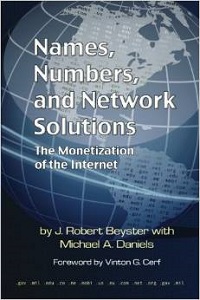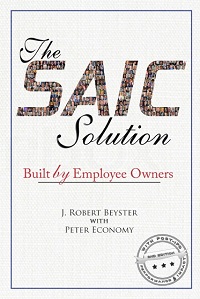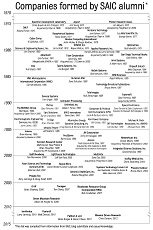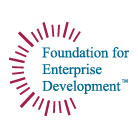MYTH #2: More Employee Ownership Is Always Better
Closed Published by Dr. Beyster August 30th, 2007 in Employee Ownership.Here is the second in a series of five “myths” of employee ownership written by Bill Scott. I hope you find it as interesting as I do. Bill Scott welcomes your comments on this article. — Bob
MYTH #2: More Employee Ownership Is Always Better
By Bill Scott
At many large, public companies there seems to be a belief that the more equity you award to senior management — most often in the form of stock or stock options — the more those executives will apply themselves and the more the company will prosper. This must certainly be the case, right? How else to explain the huge stock-based compensation packages offered to CEOs and other top executives at most Fortune 500 companies? However, our experience with more than 35 years of equity compensation at Science Applications International Corporation (SAIC) — the largest employee-owned science and engineering firm in the United States — doesn’t support that notion.
In reality, a person can only be motivated so much. Beyond a certain point, concentrating great amounts of equity ownership in top management does little to generate better business results. Does $10 million in stock options — or $100 million — motivate a CEO to work harder and smarter than $1 million worth? Perhaps not. The most likely outcome is no change in behavior at all. However, in some isolated cases, CEOs may feel compelled to manipulate their company’s financial results in hopes of benefiting themselves, and not their companies or shareholders.
So how should equity be distributed if a company is to maximize its chances of success? At SAIC, the starting place was our recognition that the single most important ingredient in the recipe for entrepreneurial success was paying customers, that is, revenues — not the distribution of equity to top executives. The ability to grow a company’s revenues and profits is the essential characteristic of a successful entrepreneurial firm. By putting revenues first, you can grow jobs, minimize costs to make profits, use capital to hire new talent, and grow profits. Without revenue growth, everything else sags. Our basic business was performing research, development, and systems integration under contract for large customers such as the U.S. government. When we successfully performed on a contract, we would make a modest profit. So SAIC’s success has always started with revenue growth.
Click here (PDF file) to read the rest of this article.




